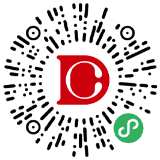2010年7月27日Christopher Associates宣布,加州海湾地区的薄膜光伏制造公司最近采用了日本大阪的UNIX Unisonik'焊接系统以满足其大量光伏组件焊接需求。
公司对几种不同的光伏丝带焊接方法进行了试验比较,最后Unisonik因使用便捷,灵活性强,成本低廉而脱颖而出。
日本Unix公司精心开发的Unisonik系统采用了专有的热与振动结合法,焊接以前较为困难的基板焊接。运用Unisonik系统后过去难以焊接的不锈钢,铝,涂层或无涂层的玻璃以及其他基质在先进系统标准流程中都变得轻而易举。
Unisonik – M采用了60 kHz超声波去除氧化,扩散基体金属并减少焊点空洞。Unisonik - M系统是一个小型应用程序或实验室适用的人工手动系统,Unisonik - F系统则是完全生产环境中完全由机器人操作的自动化焊接系统。
Unisonik非常适合于困难的基板焊接,在这方面,Unisonik在光伏制造过程的多个领域都表现出色。

Jul 27, 2010 – Christopher Associates announces that a Bay area thin film photovoltaic manufacturing company recently adopted the Japan Unix ‘Unisonik’ soldering system for its large panel soldering needs.
Several different methods of attaching PV ribbon were investigated, and the Unisonik was selected for its ease of use, flexibility and low cost of ownership.
The Unisonik system, developed exclusively by Japan Unix, uses a proprietary combination of heat and vibration to allow soldering to previously difficult substrates. Stainless steel, aluminum, coated or uncoated glass, and many other substrates that were difficult to work with in the past now are standard processes due to this advanced system.
The Unisonik-M uses ultrasonic waves of 60 kHz to remove oxidation, diffuse the metal into the substrate and reduce voids in the solder joints. The Unisonik-M system is a manual system for small applications or lab work, and the Unisonik-F system is a fully automated robotic soldering system for use in production environments.
Uniquely suited for soldering to difficult substrates, the Unisonik has shown excellent results in multiple areas outside the Photovoltaic manufacturing process as well.
索比光伏网 https://news.solarbe.com/201007/29/12297.html



